doe
Latest

NASA picks three companies to develop lunar nuclear power systems
A fission system could power long-term missions to the Moon and Mars.
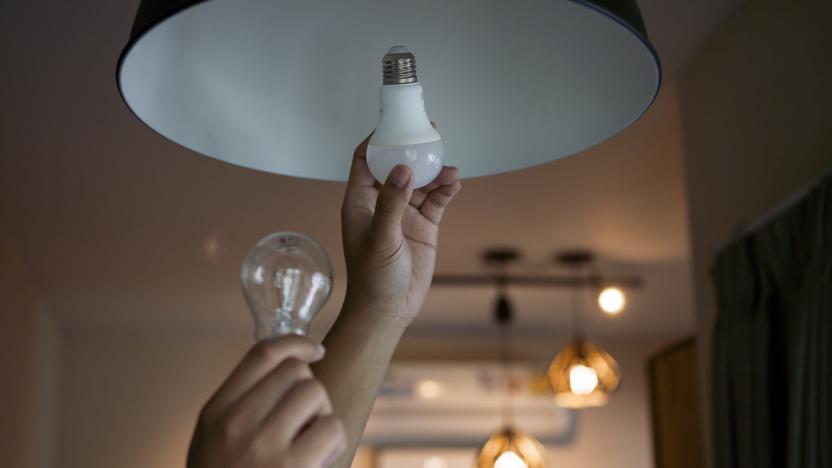
The Energy Department will block sales of inefficient light bulbs
New efficiency standards may help reduce carbon emissions by 222 million metric tons.
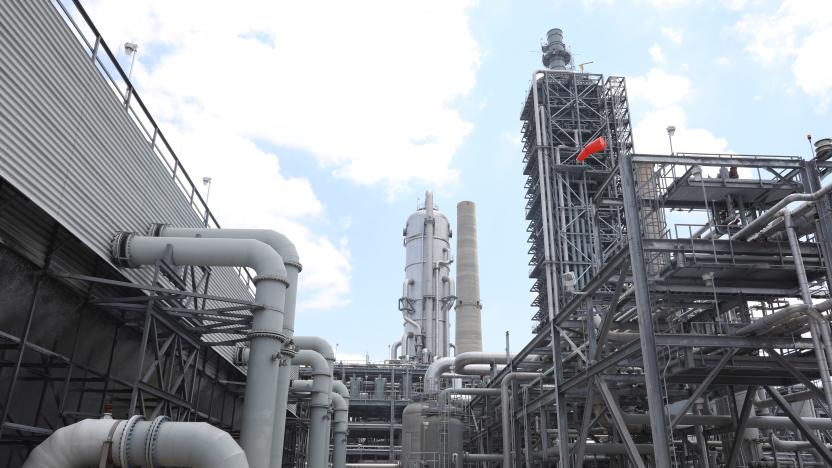
The US government spent $1.1 billion on carbon capture projects that mostly failed
The GAO has said that federal agencies have spent $684 billion on coal plant carbon capture and storage (CCS) projects that have mostly failed.

US energy department hopes instant permits will boost rooftop solar installations
The Department of Energy (DoE) has announced that it's rolling out a new tool that will make it much easier and faster to get a permit for a rooftop solar installation.
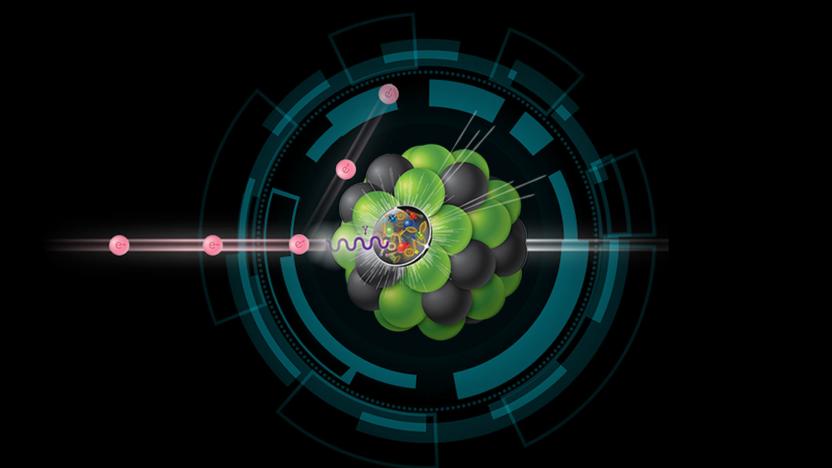
The next US particle accelerator will be built on Long Island by 2031
The Electron-Ion Collider will try and uncover the secrets of how electrons bind themselves together.
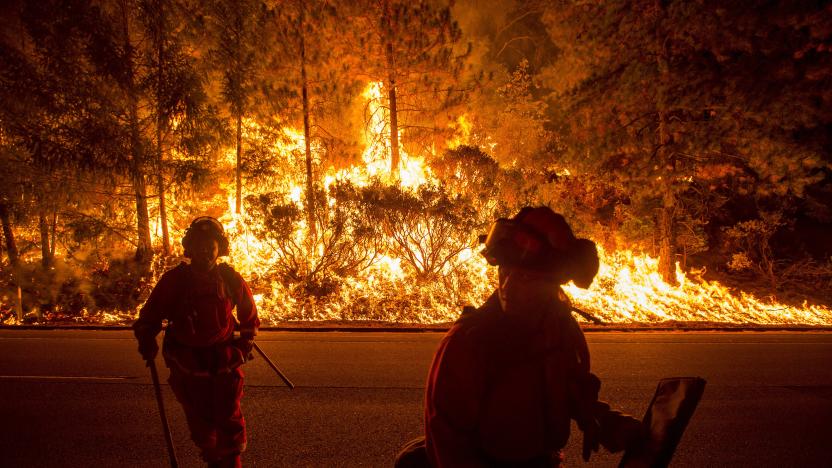
Microsoft is helping the government build AI disaster response tools
Microsoft and the DOE are building AI disaster response tools.

Department of Energy will invest $300 million in green transportation research
The US Department of Energy (DOE) has set aside nearly $300 million, split across three separate funding opportunities, in new grants to promote the development of sustainable transportation tech. The first of the funds will see the DOE's Vehicles Technologies Office offer up to $133 million in grants to groups that pitch new battery, engine and fuel technologies.

Trump admin blocks expanded rules against inefficient lightbulbs
On Friday the Department of Energy announced it will not allow amended standards for incandescent lamps to go into effect. Following the passage of the Energy Independence and Security Act of 2007 there was talk of a "ban" on incandescent lights, but that wasn't exactly what the rules mandated. While there has been a regulatory push toward more efficient LED lighting that's cheaper to use over time and better to reduce climate change-causing emissions, stricter definitions finalized by the Obama Administration would have blocked the sale of bulbs under a certain level of efficiency beginning on January 1st, 2020. In combination with another change announced in September, the Energy department is now blocking stricter rules and keeping older-style, less-efficient lighting on the shelf. The current administration has argued that it favors consumer "choice" of bulbs that may be available for cheaper up front and says that LED bulbs dominating the marketplace shows new rules aren't needed. Conservationists and many others claim that is not true at all, and incandescent bulbs have already been phased out by law in many other places. According to them, the move is backed by bulb manufacturers who want to dump their inefficient products -- that haven't been made in the US for years -- on US consumers. In response, the Natural Resources Defense Council notes several states, including California, Colorado, Nevada, Washington, and Vermont, have established their own higher standards for lightbulbs. Also, 16 attorneys general are suing the administration over the moves, and in November New York AG Letitia James said "The United States cannot and will not be the exception to the international movement to phase out the inefficient, unnecessary, and costly use of incandescent bulbs."
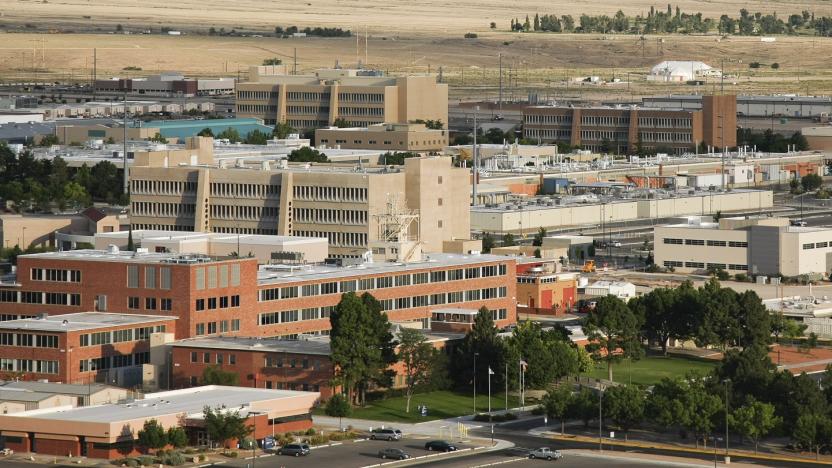
World's largest ARM supercomputer is headed to a nuclear security lab
Most supercomputers are focused on pure processing speed. Take the DOE's new Summit system, which is now the world's most powerful supercomputer, with 9,000 22-core IBM Power9 processors and over 27,000 NVIDIA Tesla V100 GPUs. But processing performance isn't everything. Last year, Hewlett Packard Enterprise announced The Machine, its prototype for a supercomputer built around blazing fast memory. It's meant to churn through tons of data, though it can handle it's fair share of high performance computing (HPC) jobs.

Rick Perry didn't understand the role of the Department of Energy
Rick Perry, former Governor of Texas, could become the United States' next energy secretary. However, according to a New York Times report, Perry believed the role would help him champion the country's oil and gas industry — which he has experience with during his time as governor. In fact, the job specification (and the majority of the department's budget) actually centers on the nation's $20 billion nuclear stockpile and overseeing national laboratories that form a major part of the government's science remit. If approved, Perry has incredibly stiff learning curve ahead of him, encompassing nuclear management, science and technology investment.

New DoE guidelines stand for scientific integrity over politics
At a time when scientific facts are frequently disputed for political reasons, the Department of Energy is updating its policy to ensure the "protection of scientific integrity." That quote comes from a Medium post by US Secretary of Energy Ernest Moniz that lays out why we need accurate, unbiased science and three points for the department's policy going forward: Energy Department scientists are able to express their opinions. Energy Department scientists must get the opportunity to review Department statements about their work. Energy Department officials should not and will not ask scientists to tailor their work to particular conclusions.

New magnetic field theory gets us closer to nuclear fusion
Researchers from the US Department of Energy (DoE) and Princeton University have developed a new theory on plasma that could help scientists figure out solar flares and fusion power. Most fusion research is focused on "magnetic confinement" reactors that use powerful magnets to fuse hydrogen plasma into helium. One of the biggest problems with that technique is that the plasma itself spawns new magnetic fields, which play havoc with the reactions.

DOE to start building a tool that will 3D map the universe
Next year, the Department of Energy will start building the Dark Energy Spectroscopic Instrument (DESI), which will 3D map millions of galaxies across the universe. The agency-backed project has passed "Critical Decision 3" almost a year after it went through the second phase of approval. That means DOE has OK'd its construction and will provide the funding needed to finish manufacturing its camera's 5,000 10-inch-long cylindrical robots. See that pizza slice-like contraption in the image above? It's one of the camera's ten "petals." Each hole in a petal houses a robot, and the ten petals will carry a total of 5,000. All those machines will point fiber-optic cables to the sky to gather light from distant worlds.

Gamma ray map offers best view yet of our galaxy's energy
Space is full of gamma rays and other intense forms of energy, but you've only ever had a partial picture of it. Ground-based telescopes can only see so much, and even the Fermi space telescope (designed to catch these energies) has missed out on a lot of it... until now, that is. NASA has posted a much more complete gamma ray map using 6 years' worth of refined Fermi data. The result is a far more detailed and comprehensive view of the energy 'bright spots' (between 50 billion to 2 trillion electron volts) in the Milky Way galaxy and beyond. The pretty picture you see above includes the leftovers of supernovae, pulsar wind nebulae and even galaxies whose supermassive black holes make them detectable from millions of light years away.

Department of Energy was hacked over 150 times since 2010
Between 2010 and 2014 the US Department of Energy was hit by hackers over 150 times. Just pause and think about that for a moment. In the span of four years, the federal organization that helps regulate our power grid, energy labs and nuclear weapons was successfully infiltrated 159 times. Almost as terrifying, the department was constantly under attack according to records obtained by USA Today. During that time there were 1,131 attempts made to break into the DOE's systems.
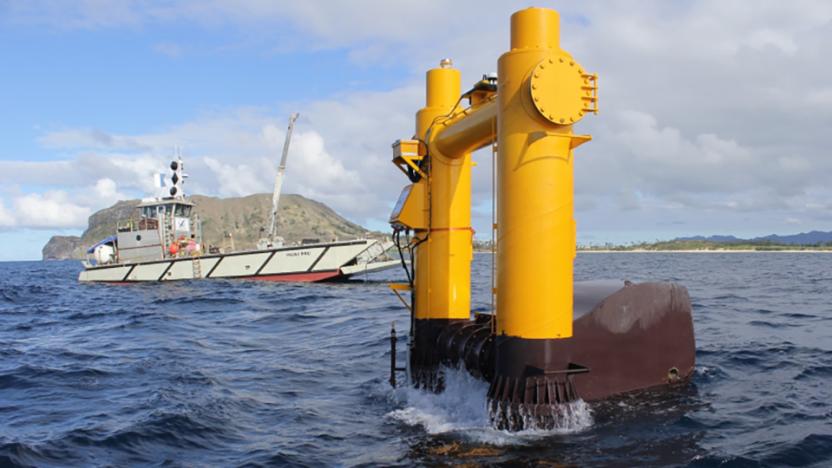
Wave generator supplies US electrical grid for the first time
A prototype wave generator called Azura is supplying grid power to Hawaii, the first time such a feat has been officially verified, according to the US Department of Energy (DoE). Though it can only produce 20 kilowatts, the DoE said that similar devices could eventually provide large amounts of clean power to coastal cities. The project is co-sponsored by the US Navy and was developed by an Oregon-based company called Northwest Energy Innovations (NWEI). It's located at the Navy's Wave Energy Test Site in Kaneohe Bay in Oahu, at a depth of about 30 meters (100 feet).

NOvA neutrino detector captures cosmic rays in 3D, aims to unlock the mysteries of the universe
All apologies accepted if you mistook that image above as cover art for Daft Punk's new album -- it's not (although the duo should consider it.). That Tron-ish, equalizer-like graphic is actually a 3D representation of particle activity left behind by cosmic rays interacting within NOvA, the Department of Energy's under construction neutrino detector. It's the first such visual record made possible by the University of Minnesota-operated facility that, when completed, will extend for more than 200 feet underground in an area near the Canadian border and endure regular bombardment by a controlled stream of neutrinos. Beyond its obvious visual appeal, data like this should give physicists at the DOE's Fermi National Accelerator Laboratory insight into the nature of neutrinos (some of which are said to have been issued from the Big Bang) and, by extension, the origins of our ever-expanding universe. For now, though, the project's still in the baby steps phase -- only 12 feet of the detector (the currently operational portion) has been successfully built out -- so the reality-shattering, scientific epiphanies will have to wait. Until then, it's all still life as we safely know it.

Elon Musk says Tesla will repay Department of Energy loan well before 2022 due date
Tesla's CEO, Elon Musk, has been the focus of many headlines lately due to a certain, well-documented kerfuffle with The New York Times. Today, however, the automotive company's chief isn't questioning any reviews. Instead, he's taken to the Advanced Research Projects Agency for Energy summit to share his belief that Tesla Motors will pay off that $465 million loan from the US Department of Energy well ahead of when it's expected to -- in five years, rather than ten, to be precise. Musk's comments shouldn't come as a surprise, however, given that the Model S maker has been paying its DOE-borrowed cash on time and before the deadlines -- something it's been able to accomplish despite being far from a money-making machine at the moment. For the Department of Energy, meanwhile, this all sounds like music to the ears, especially since it knows that not all EVs always work out as planned.

Microbial music: Using sound to represent data from the deep blue sea
Science and music, many would say opposite sides of the same coin. Unless you're DOE biologist Peter Larsen at the Argonne National Laboratory, who would probably argue your legal tender has been double-headed all along. While Larsen is more likely to be studying the intricacies of microbes than Miles Davis, his latest work puts the two of them closer than ever before. Faced with the task of studying vast amounts of microbial data gathered from the English Channel, the biologist explored alternative ways of making sense of it all. While he could have made a spiffy set of charts, Larsen claims that there are certain parameters, like sunlight and temperature, that give the data a structure that lends itself to musical representation. While classical music might seem the typical choice, due to the irregular nature of the data, the result is more free-form jazz, yet still surprisingly musical. If you were wondering if there is something particularly groovy about the microbes in the English Channel, there isn't. Larsen and his colleagues used a similar idea in previous work looking at the relationship between a plant and a fungus. This isn't the first time data has been "sonified," but these processes that might initially seem to have no relation to music, rhythm and melody, actually highlight the patterns in natural phenomena. Want to get down to the microbial beat? You can hear a sample at the more coverage link. [Image Credit: Argonne National Laboratory]

Diamond hones DOE X-ray laser howitzer to razor-sharp precision
The US Department of Energy's SLAC accelerator lab already has a pretty useful X-ray laser -- the Linac Coherent Light Source (LCLS). But, recent modifications to the device have scientists drooling over its new found potential. Using a thin wafer of diamond, the Stanford-run lab filtered the beam to a lone frequency, then amplified it in a process called "self-seeding." That's given the world's most powerful X-ray laser even more punch by tossing out unneeded wavelengths which were reducing its intensity. The tweaks allow scientists across many fields to finesse and image matter at the atomic level, giving them more power to study and change it. According to the lab, researchers who came to observe the experiment from other X-ray laser facilities "were grinning from ear to ear" at the possibility of integrating the tech into their own labs. The SLAC team claims they could still add 10 times more punch to the LCLS with further optimization, putting the laser in a class by itself -- X-ray-wise, anyway.












